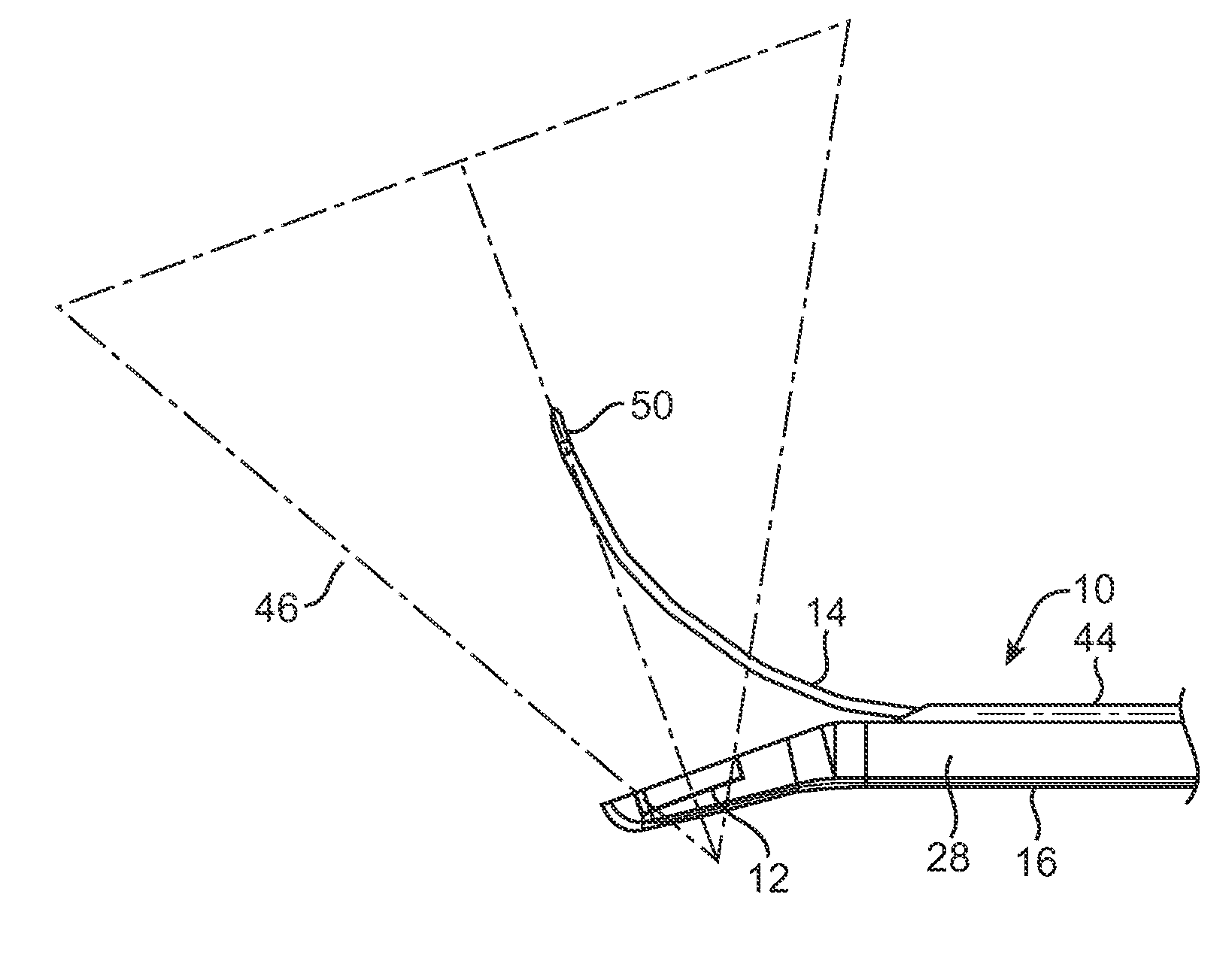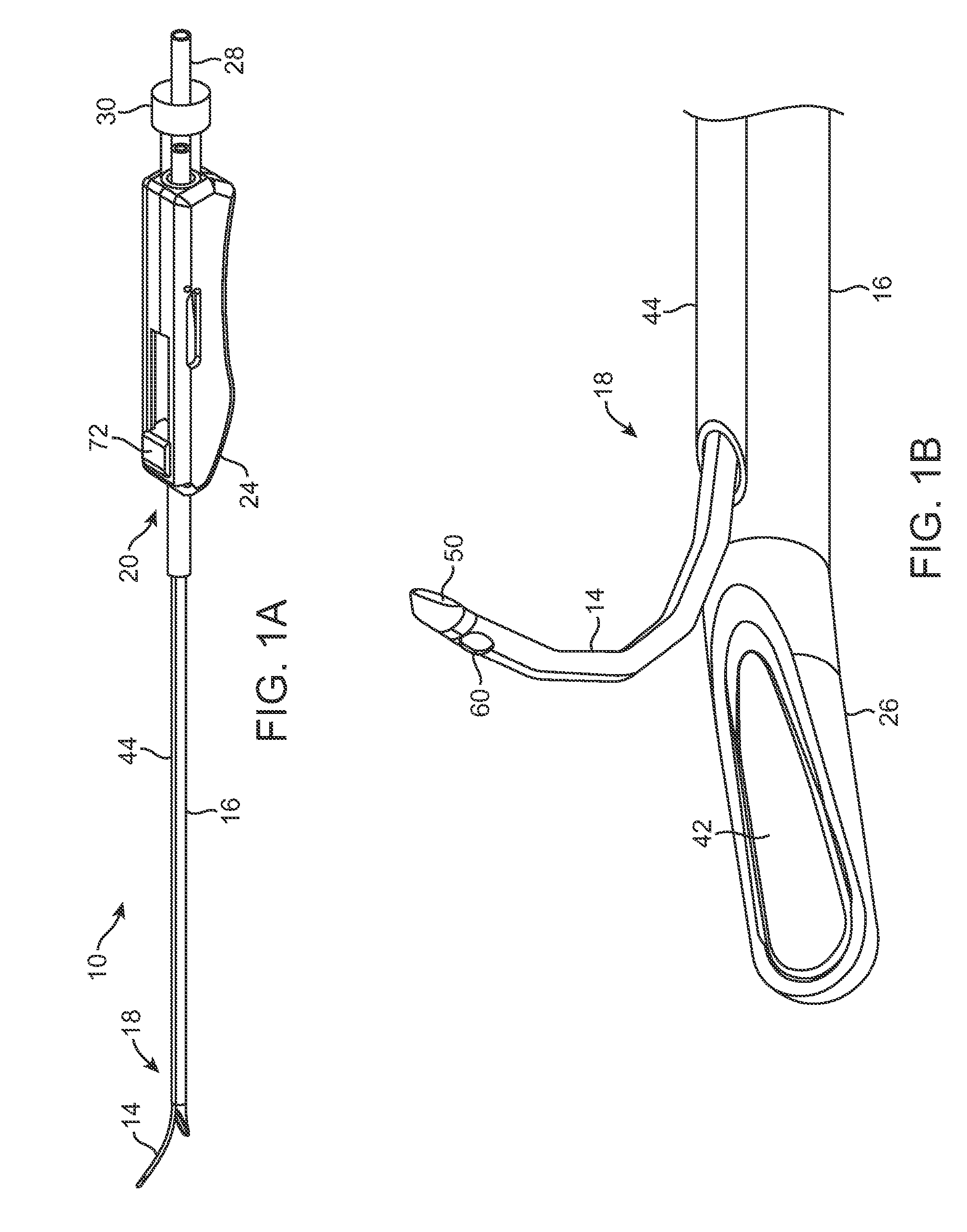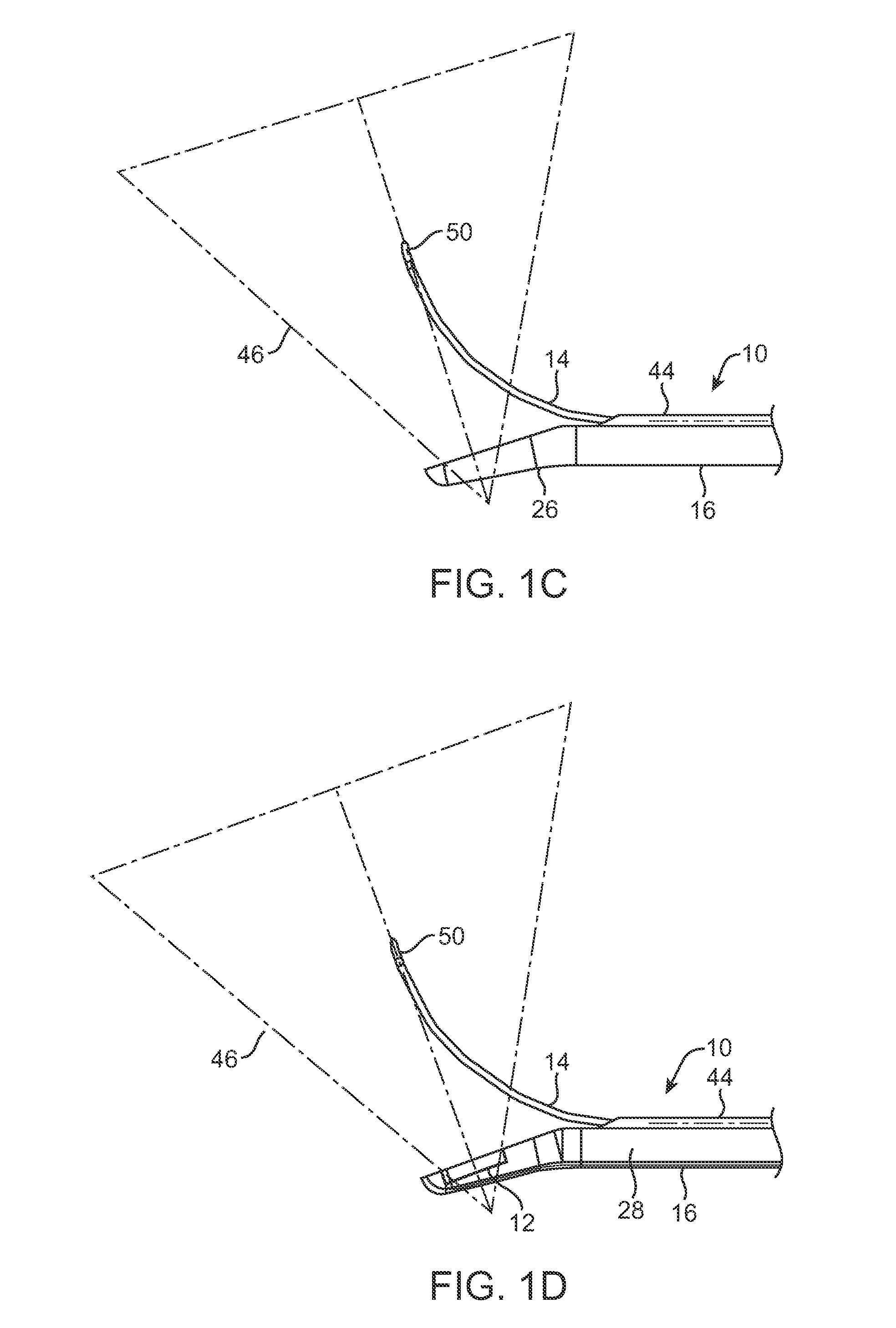Rigid delivery systems having inclined ultrasound and curved needle
a delivery system and ultrasound technology, applied in the field of medical systems and methods, can solve the problems of ineffectiveness of all medications, significant symptoms, pain, etc., and achieve the effects of reducing the curvature angle of the needle, increasing the angle of the array tilting, and increasing the viewing angl
- Summary
- Abstract
- Description
- Claims
- Application Information
AI Technical Summary
Benefits of technology
Problems solved by technology
Method used
Image
Examples
Embodiment Construction
[0033] Referring now to FIGS. 1A through 1D, an exemplary deflectable tip delivery system 10 having an inclined ultrasound array 12 for improved imaging and curved needle 14 for ablation treatment is illustrated. The system 10 generally includes a rigid delivery shaft 16, an ultrasound imaging insert 28, and a curved needle 14. The delivery shaft 16 comprises a distal end 18, a proximal end 20, and an axial passage 22. A handle 24 may be attachable to the proximal end 20 of the shaft 16. The distal end 18 of the shaft 16 may have a bent or deflectable distal tip 26, as best seen in FIGS. 1B and 1C. The ultrasound imaging insert 28 may be removably and replaceably disposed within the axial passage 22 of the shaft 16, as best seen in FIG. 7. A sealing element 30 may be provided between the ultrasound imaging insert 28 and the shaft handle 24 to ensure sufficient sealing around the insert 28 at a proximal end. It will be appreciated that the above depictions are for illustrative purpos...
PUM
 Login to View More
Login to View More Abstract
Description
Claims
Application Information
 Login to View More
Login to View More - R&D
- Intellectual Property
- Life Sciences
- Materials
- Tech Scout
- Unparalleled Data Quality
- Higher Quality Content
- 60% Fewer Hallucinations
Browse by: Latest US Patents, China's latest patents, Technical Efficacy Thesaurus, Application Domain, Technology Topic, Popular Technical Reports.
© 2025 PatSnap. All rights reserved.Legal|Privacy policy|Modern Slavery Act Transparency Statement|Sitemap|About US| Contact US: help@patsnap.com



